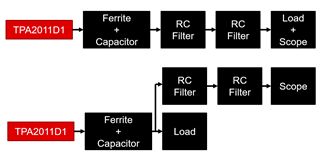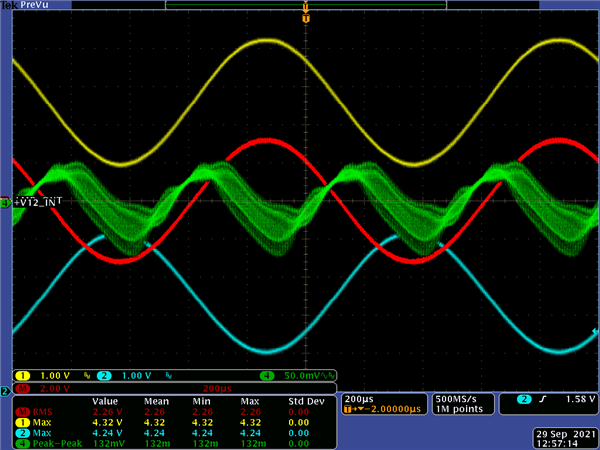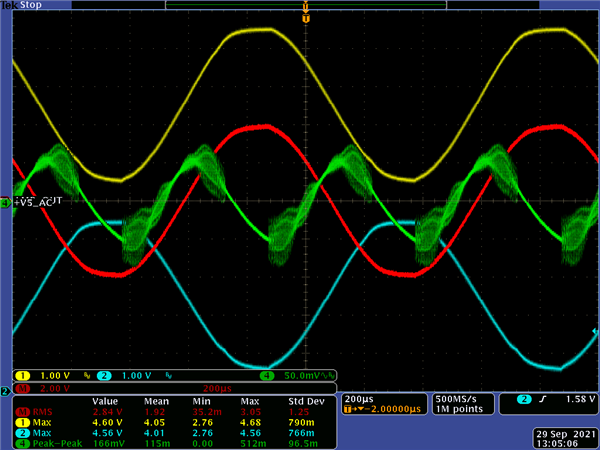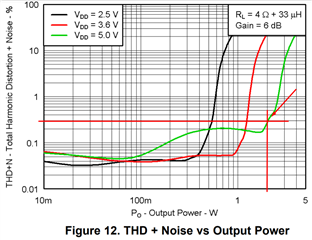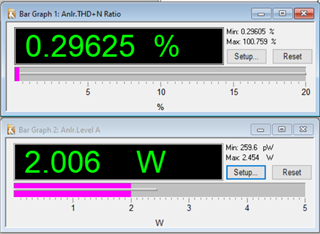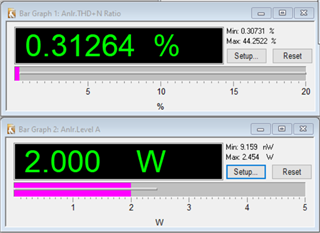Hi support Team,
During Audio Amplifier test the 1kHz sinus I tried to amplify got cut of and I am not sure if I am measuring wrong or if the design is incorrect.
Schematic:
In bellow test R21 and R22 where changed to 200kOhm and R23 to 100kOhm to reduce Gain.

Test Setup:

- 4kOhm resistor connected between SPKR- and SPKR+
- Two times RC low-pass filter with RC-Filter Rf=1kOhm and Cf=4.7nF connected between SPKR- and GND_AUD and SPKR+ and GND_AUD
- Oscilloscope cannel1 connected to SPKR- between Rf- and Cf- as close as possible to Cf
- Oscilloscope cannel2 connected to SPKR+ between Rf+ and Cf+ as close as possible to Cf
- GND pins of cannel1 and 2 connected between Cf+/Cf- and GND_AUD as close as possibel to Cf
Test Procedure:
- Play 1kHz (0db) sine with Audio software with an HD audio codec and measure SPKR- and SPKR+
- Measure input voltage +V5 on C40 (AC-measurement)
Test Result:
SPKR- (yellow) and SPKR+ (blue) get cut of although the output power is only about 2W according to the measurement.
And the +V5 supply voltage of the amplifier has almost 200mV ripple.

Second Test Setup:
The RC-low-pass filter was changed to a 30kHz filter with Rf = 100Ohm and Cf = 470nF
Second Test Result:
This time instead of measuring the +5V the mathematical function of the oscilloscope was used to calculate the difference between SPKR- and SPKR+. The RMS of the mathematical function was measured.
For some reason SPKR- and SPKR+ where not cut off although nothing except the RC-filter was changed compared to the last measurement.

Questions:
- What is the right way to measure the maximum output power of the TPA2011D1?
- What is the maximum allowed peak to peak level between the input pins IN+ and IN- of the amplifier?
- Do you see any issues with above shown schematic?


